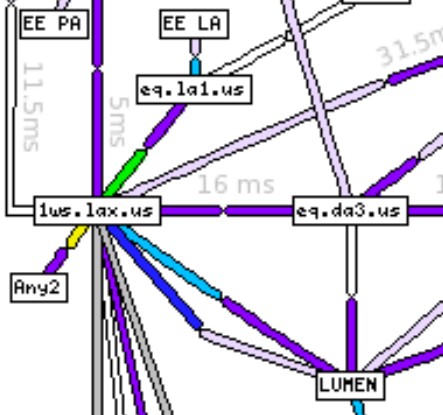

实时网络动态图的定义
任何在电信领域的新手,当第一次看到这个实时网络动态图(Weathermap)时,可能会有一些困惑。因此,在下面的部分,IPTP网络将解释这个实时网络动态图的定义,它的好处,在地图上显示的细节,以及如何阅读和理解这个工具的完美。
实时网络动态图是一个网络地图,可以直观地显示一个组织的网络性能和实时流量,在这种情况下,以IPTP Networks作例。
实时网络动态图工具不仅给互联网供应商带来很多好处,而且还被互联网交易所、电信公司、国家教育互联网网络(例如,欧洲的Eduroam)、金融服务、政府机构,以及大学和学校广泛使用。
实时网络动态图工具的好处
作为一个网络性能的可视化工具,IPTP Networks的实时网络动态图每5分钟不断更新一次,以确保用户可以随时获得关于我们的系统状态和路由流量的实时最新信息。
此外,当问题发生时,通过检查实时网络动态图,你能够迅速发现哪个连接被很多人使用,导致当时的 “交通堵塞 “情况。由于它,你可以切换到另一条 “不那么拥挤 “的路线,及时解决这个问题。
实时网络动态图工具内部
为了更好地熟悉这个工具,让我们更深入地挖掘它内部的元素。总的来说,IPTP Networks的实时网络动态图的外观是这样的:


详细来说,通过实时网络动态图显示的信息包括:
– 从0%到100%的 “负载 “栏(如下图所示)可以帮助用户了解一个连接的容量(百分比)正在被使用。为了保证工作的顺利和方便,你应该只选择紫色或蓝色的任何路线,这意味着 “负载 “水平只从0%到50%)。


如何阅读和理解实时网络动态图
所以,基本上,在打开实时网络动态图时,你总是会看到如下图所示的网络连接:

联系我们
如果您遇到本网站的问题需要报告,请通过
